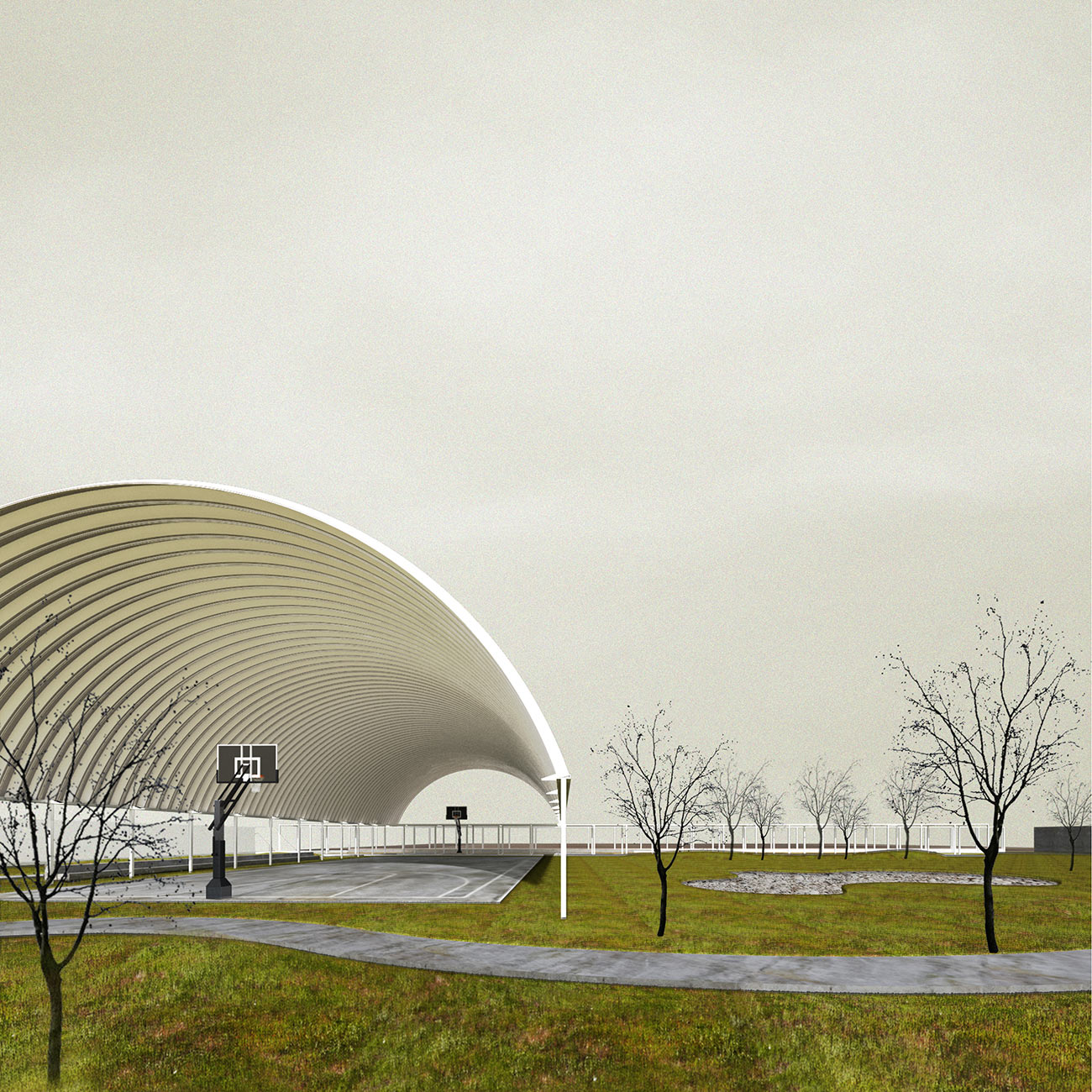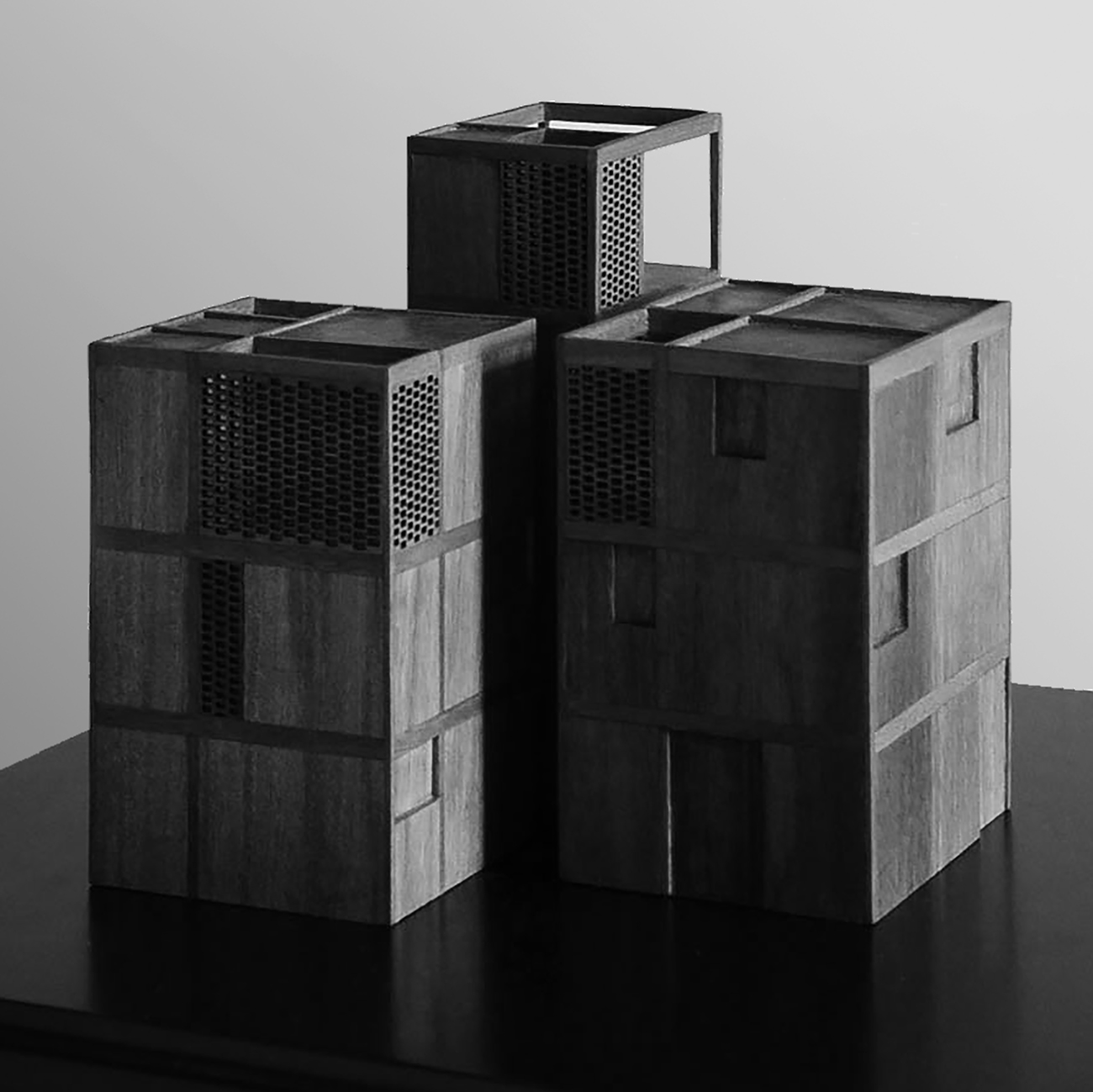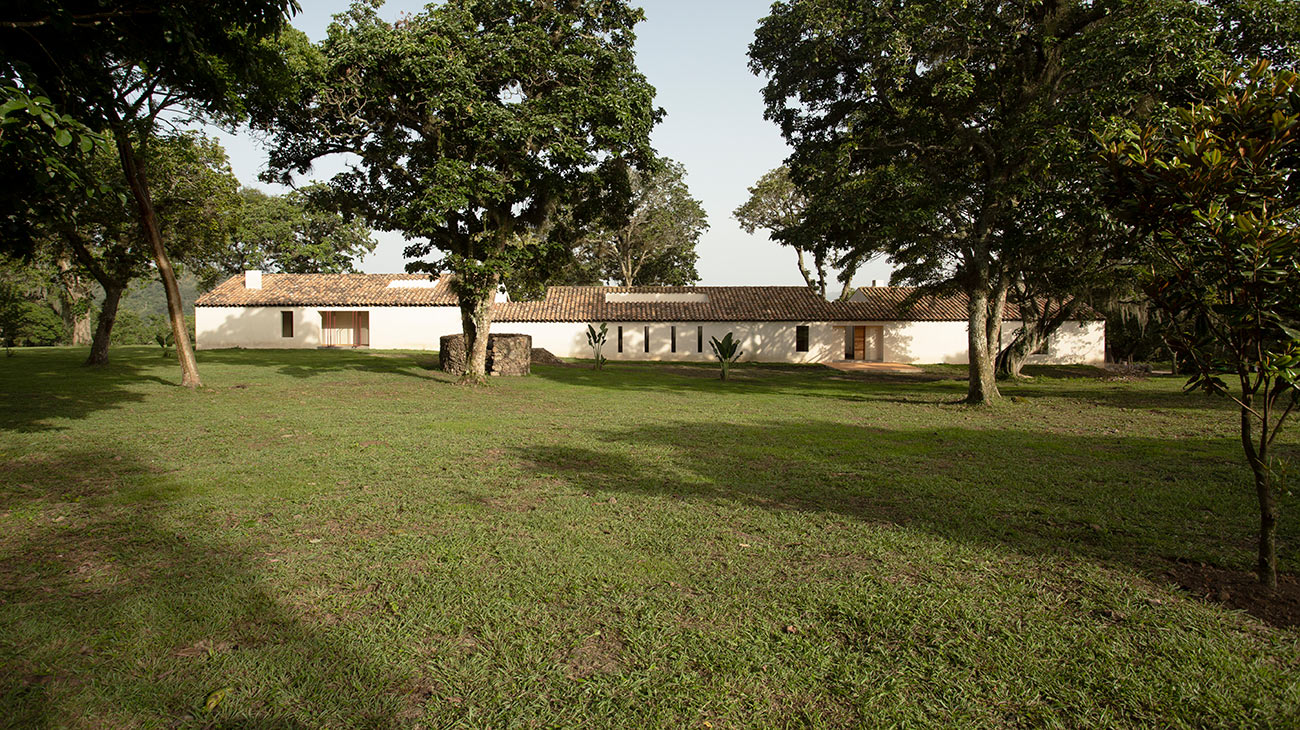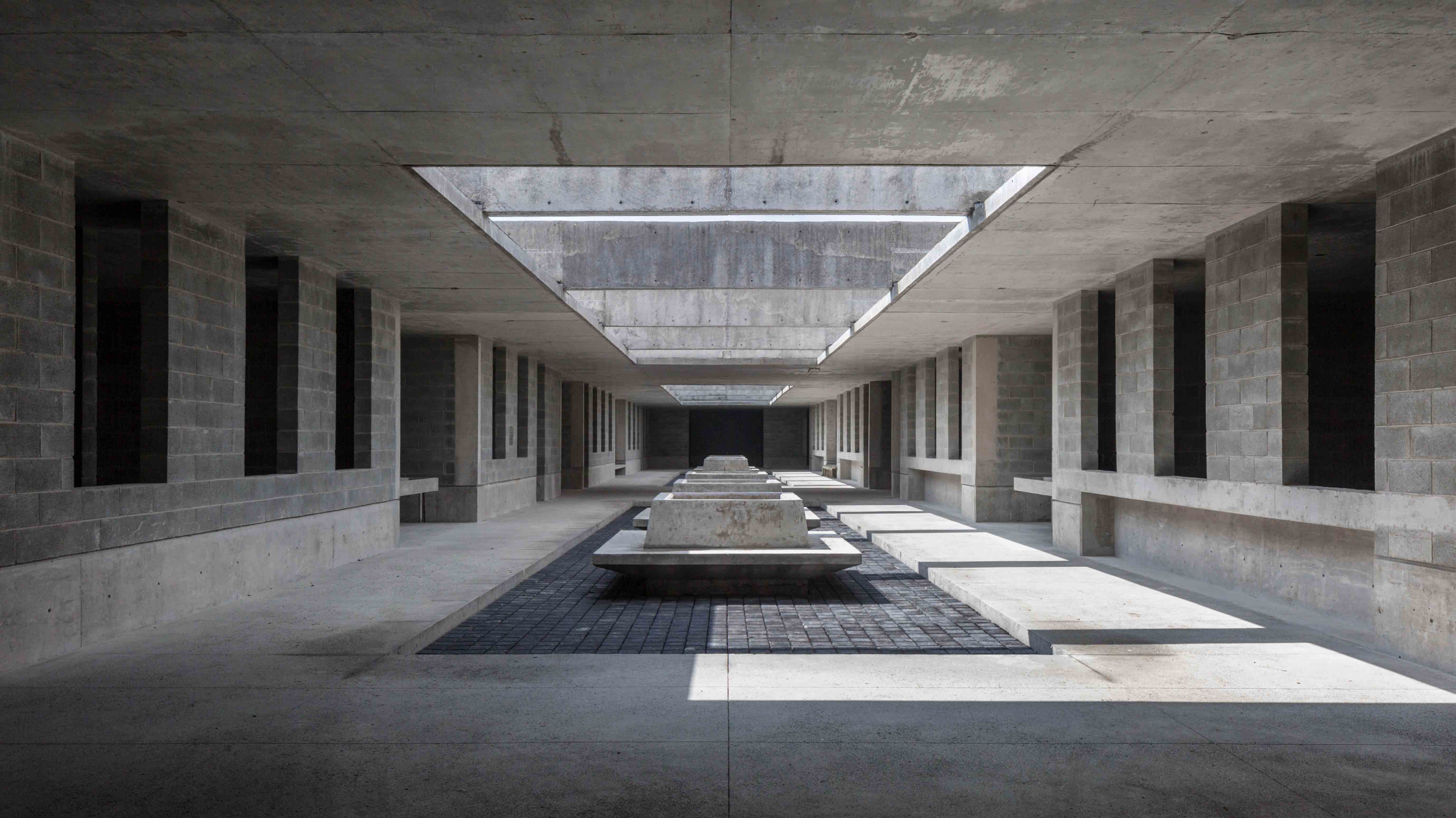Possibilities for action
Mexican architects Bernardo Quinzaños and Ignacio Urquiza discuss moving between high-end commissions and social design projects.
An interview with Bernardo Quinzaños and Ignacio Urquiza, 2019 Emerging Voices.
For the past decade, architects Bernardo Quinzaños and Ignacio Urquiza led Mexico City-based firm Centro de Colaboración Arquitectónica (CCA). (Urquiza recently launched his own firm.) A substantial part of their work consisted of residential projects, including both high-end homes and social housing. Most of the latter were commissioned by a Mexican government agency, the National Workers’ Housing Fund Institute (better known by its Spanish acronym, INFONAVIT).
The Architectural League’s Sarah Wesseler spoke with Urquiza and Quinzaños in February about working with INFONAVIT, moving between luxury and workers’ housing, and searching for ways to bring value to the world through design.
*
Can you tell me more about INFONAVIT’s work with architects and your role in the program?
Bernardo: INFONAVIT is a very large Mexican financial institution that has given more than 10 million housing loans to Mexican workers.
In the past six years, during the presidential term of Enrique Peña Nieto, there was a very interesting project within INFONAVIT, led by architect Carlos Zedillo, which undertook a series of projects around social housing and sustainability. They also created a new center called the Research Center for Sustainable Development, and within this new part of INFONAVIT there were various programs focused on architecture.
INFONAVIT, in its early days [the organization was founded in 1972], worked with many well-known Mexican architects to create very successful housing units, but over time things changed. In recent years, architects stopped working on social housing, and the sector was more concentrated on repeat business—making hundreds or thousands of houses with the same design, without giving much thought to issues like context, sustainability, quality of life, the environment, urbanism, connectivity.
So one of the things the agency wanted to do during the last administration was to work with young architects—and not-so-young architects—to come up with better solutions for Mexican social housing. We were fortunate to be invited to participate in some of these efforts.
The first program we participated in was a program called Regional Single-Family Housing, which invited 32 Mexican firms to propose a housing type specific to one of the states in the country, responding to the urban context, the climatological context, the social conditions, etc. We designed a prototype for the state of Puebla.
Later we took on other projects restoring old housing units. We also worked on rural housing in Tlaltizapán, in the state of Morelos.
In 2017 there was a very significant earthquake in Mexico, and we worked with the institute on reconstruction. We did a project in Ocuilan, designing a small house for a family in a municipality that was hit hard by the earthquake.
And finally, we collaborated with the New York office of OMA, headed by Shohei Shigematsu, to design a pedestrian bridge in the municipality of Jojutla, which was the epicenter of the earthquake. This project has not been built yet, but we’re hoping we can get it done.
Now that Peña Nieto’s term has ended, we’re going to see what the new government has planned for INFONAVIT.
Can you describe one of the INFONAVIT projects that you thought was particularly successful from a design standpoint?
Bernardo: Given the degree to which design had been left out of social projects in the past, I think practically any serious effort at architectural research or development in this area was beneficial.

Recreational facilities designed as part of an INFONAVIT effort to improve the quality of life in a Mexico City social housing complex. Credit: CCA
For us, being able to approach the work from the standpoint of research was very interesting. We had previously done a few projects in the social realm, but working with developers. There’s a huge difference between the way a developer sees these projects—as financial operations—and an approach that prioritizes the social, community, and environmental contexts of a project. This created a very important contrast in the way we approached these projects.
It was also interesting to find that our experience with high-end residential projects allowed us to incorporate universal aspects of human experience in the housing design, even on a limited budget. This showed that design can create value in different social classes and in different contexts, and isn’t reserved exclusively for those who have the economic resources to commission a huge project.
Ignacio: Yeah, being able to focus our attention on the user, or the inhabitant, has allowed us to develop architecture with a positive impact regardless of the scale or use of the program—understanding that every architectural project can create value, right? Approaching a social project with use in mind creates a lot of possibilities. The best way to understand it is to focus on who lives there, how they live, and what they need.
This is something that has always been present in our work—thinking hard about our priorities and understanding why and for who we design. We don’t draw a hard line between small, medium, or large projects, or between social projects and luxury projects. Giving equal importance to a project for any use and at any scale is something we’ve prioritized.
I think that all projects have a positive impact, if we understand them correctly, because they can open up a spectrum of very interesting possibilities for action. We’ve always talked about designing an architecture that’s precise not only in centimeters or inches, but precise in everything it touches: its context, the client, the resources. And that’s very ambitious, but the fact of always having that idea in your head, and sharing it with your clients and those involved in the project, turns that mission into a line of action.
Did your INFONAVIT projects get built? Were most intended to be constructed, or were some for research purposes only?
Bernardo: Some of the programs had a more academic focus and others focused more on solving real problems. All the projects were realized in the sense that they could be built. None were purely academic or conceptual.
But not all the projects we worked on found a pathway to getting built. Some were, like the one at Ocuilan. We’re still fighting to see some others realized.
This is another thing that projects at every level of the social scale have in common: The fight to see your project built. It’s as difficult to build a rural house as it is to build a huge building in the city. Both require addressing challenges from the standpoint of financing, management, political will.
Ignacio: The Ocuilan project is part of an organization called PienZa Sostenible, which is also directed by architect Carlos Zedillo.
Often, when you work with a political institution, you find obstacles that an architecture firm can’t do much about. But when the person leading the organization understands how to handle the project, how to achieve results, who to bring in, you see results like Ocuilan. Which is a house that was just delivered to the users a few weeks ago, after three, six months of work: of getting to know the family, understanding their needs, designing it specifically for them, and not for a repeat development. It’s a very satisfying outcome for us as architects.
Are there a lot of programs in Mexico that recognize the power of architecture to contribute to social issues, or are these efforts pretty unique?
Bernardo: INFONAVIT is unique in terms of the kind of organization it is, its economic power, and its scope. And in the area of social and rural housing it’s the strongest player.
However, there are a lot of organizations like PienZa Sostenible that have been involved in the improvement and construction of social and rural housing. There have been many efforts in the country—private, nongovernmental organizations—that have tried to benefit society and use architecture as a tool for change. But many more are needed—they are not even close to sufficient.
Ignacio: The Boys & Girls Club is a great example of where the architect’s participation didn’t just consist of getting a brief and designing it, but also getting involved in every aspect of the project, from the non-architectural conceptualization to community engagement all the way through to the project’s inauguration. Bernardo has led this process for—how many years?
Bernardo: Five years.
Ignacio: And the building opened this past Friday.
Bernardo: Yeah, the Boys & Girls Club project has a very impressive scope and impact, because we’ll be able to provide care for 2,000 at-risk children. They’ll be able to go there outside of school hours to transform their lives in a positive way through the arts, through sports, through human development, through healthy living. It will give them the opportunity to escape the streets, vices, addictions, and will bring very relevant changes to the entire community.
Can you tell me more about the organization and your role on the project?
Bernardo: The Boys & Girls Club was originally founded in the US, but it has more than 4,000 clubs in 120 countries. All the Boys & Girls Clubs have their own board or foundation that’s in charge of the creation, financing, and operation of the campus. This campus is the 10th in Mexico, and it’s the first that has sophisticated architecture—and we are proud to say it’s the largest in the world in terms of the square footage of the buildings.
So it’s an example of how architecture doesn’t need to have massive resources to have an extensive impact. We did this building entirely with donations. Only companies, philanthropists, families, and friends who wanted to help us create this campus participated. And it was an effort that had very important ties to the community. We had to approach the community to express what the club’s intentions were, what its goals were, and involve them in realizing the project so that they could have the confidence to entrust their children to the Boys & Girls Club.
And now that we’ve seen it built, and we already see the first children benefiting from such a unique effort—well, it’s a project that really excites us, and makes us really happy to have been able to do it.
Interview condensed and edited.
Explore
On the table: Dinner with Fernanda Canales, Ersela Kripa, and Stephen Mueller
Three 2018 Emerging Voices winners join members of the design community for a broad-ranging conversation.
Frida Escobedo, Taller de Arquitectura lecture
Escobedo explores the concepts behind projects in Mexico, the US, and Portugal.
A Guadalajaran perspective on the future of Mexican architecture
Regional Mexican design is having a moment, says Luis Aldrete, but the nation's rapid change makes the next steps hard to predict.






